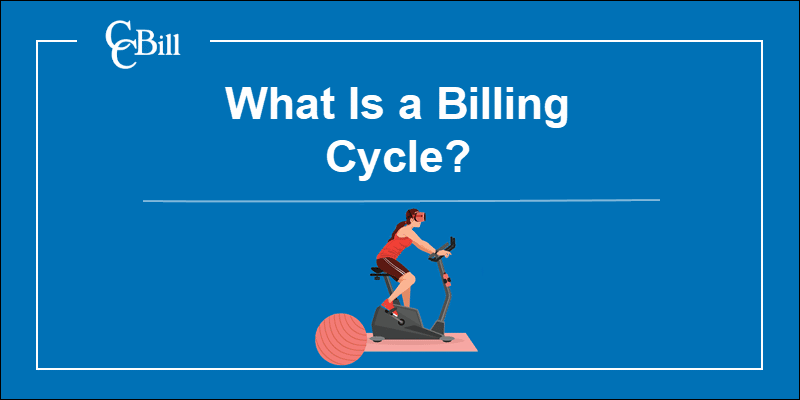Introduction
An increasing number of industries are adopting the recurring revenue model. Companies are forming long-term relationships with customers and asking them to make regular and scheduled payments for their services and products.
Merchants who want to accept recurring payments need to ensure that customers understand when, how much, and how often they are going to be charged.
A predictable billing process is essential for keeping recurring customers happy and avoiding potential payment disputes, such as chargebacks.
Learn about billing cycles and how they impact your revenue stream and churn rates.

What is a Billing Cycle?
A billing cycle is a regular interval at which companies calculate how much to bill a customer. The calculation is based on the services provided or products sold within that specific period.
Businesses are free to decide how frequently they want to charge customers, and the billing period often varies depending on the industry, type of product, or business model.
Merchants with a subscription-based business model typically set up regular weekly, monthly, or annual billing periods.
Examples of companies that utilize billing cycles include:
- Mobile carriers.
- Utility companies.
- Streaming services.
- Membership sites.
- Banks (credit card installments).
- Landlords (rent invoices).
- Small business owners who issue recurring invoices (i.e., childcare, pool cleaning services).
Businesses use automatic payments systems to charge a customer’s account or issue and send invoices to inform customers that a payment is due.
Note: Learn about bills vs invoices.
How Do Billing Cycles Work?
Customers encounter billing cycles all the time and know how they work. They expect merchants to host transparent and fair payment terms.
Merchants need to provide explicit information about the initial price, recurring price, and billing period. The terms should also contain conditions and instructions for canceling the subscription.
When a customer signs up for a recurring service:
- They need to confirm they understand and accept the terms of service.
- The customer must provide valid payment information, like credit card data or a billing address. Often, customers are required to perform an initial transaction which is considered to be the start date of their subscription and billing cycle.
- Once the billing cycle ends, the merchant calculates how much the customer is to be charged based on their usage.
- The customer is charged the correct amount on the predefined date. Depending on the agreed payment method, merchants can automate charges or ask customers to initiate payments manually in agreed time frames.
It is a good business practice to specify a grace period if a customer misses a payment and disclose all penalties and additional fees due to late payments.
Note: Learn about outstanding invoices and how to handle them.
How Long Is a Billing Cycle?
Merchants can apply any billing period they feel best supports their business plans and pricing policy.
For example, a short billing cycle allows merchants to intensify their cash flow but can hurt customer retention.
Customers like predictability, and merchants should aim to bill customers in consistent and easy-to-remember intervals.
Conventional billing cycles in most industries are:
- Weekly
- Monthly
- Three-monthly
- Bi-Annual
- Annual
Billing cycles are an opportunity for merchants to anticipate market trends and show how well they know their customers. For example, merchants offer short trial periods or create multiple price points to give customers the choice of when and how often they want to be billed.

However, merchants are also restricted by other participants in the payment process, such as banks and payment service providers.
Note: Consider what benefits and drawbacks different billing cycles have on a business in our article Monthly Vs. Annual Subscriptions: What’s Better.
Certain billing practices are considered to be misleading and unfair to customers. Merchants need to ensure that their payment terms do not lead to excessive refund or chargeback requests.
Billing Cycle and Payment Processing
Payment service providers help merchants automate recurring payments and offer multiple payment methods and billing periods.
Payment processors also assess risks associated with a merchant’s business model and may impose restrictions on billing periods the merchant is allowed to use when creating price points. For example, the payment processor can restrict a recurring period to a minimum of 30 days or a maximum of 90 days.
Choosing a payment processor that can support a flexible billing policy is essential for merchants that need to scale their business quickly and support subscription payment processing.

Stabilizing the cash flow is one of the toughest hurdles for online businesses. Merchants need to check how often the payment processor pays out their merchants. This depends on the payment processor’s billing cycle.
If the processor has a monthly billing cycle, the merchant can expect to receive their funds once a month. A payment processor with a shorter billing cycle is going to payout merchants more frequently.
Merchants know that it makes a huge difference if you receive your earnings on a weekly or monthly basis.
Conclusion
You now know how billing cycles work and what to look for when choosing a payment service provider. The best way to establish long-term customer relationships is to develop clear and simple billing policies.
Consider introducing features like automated billing and invoicing. They are vital for reducing billing errors and charging customers more efficiently.
